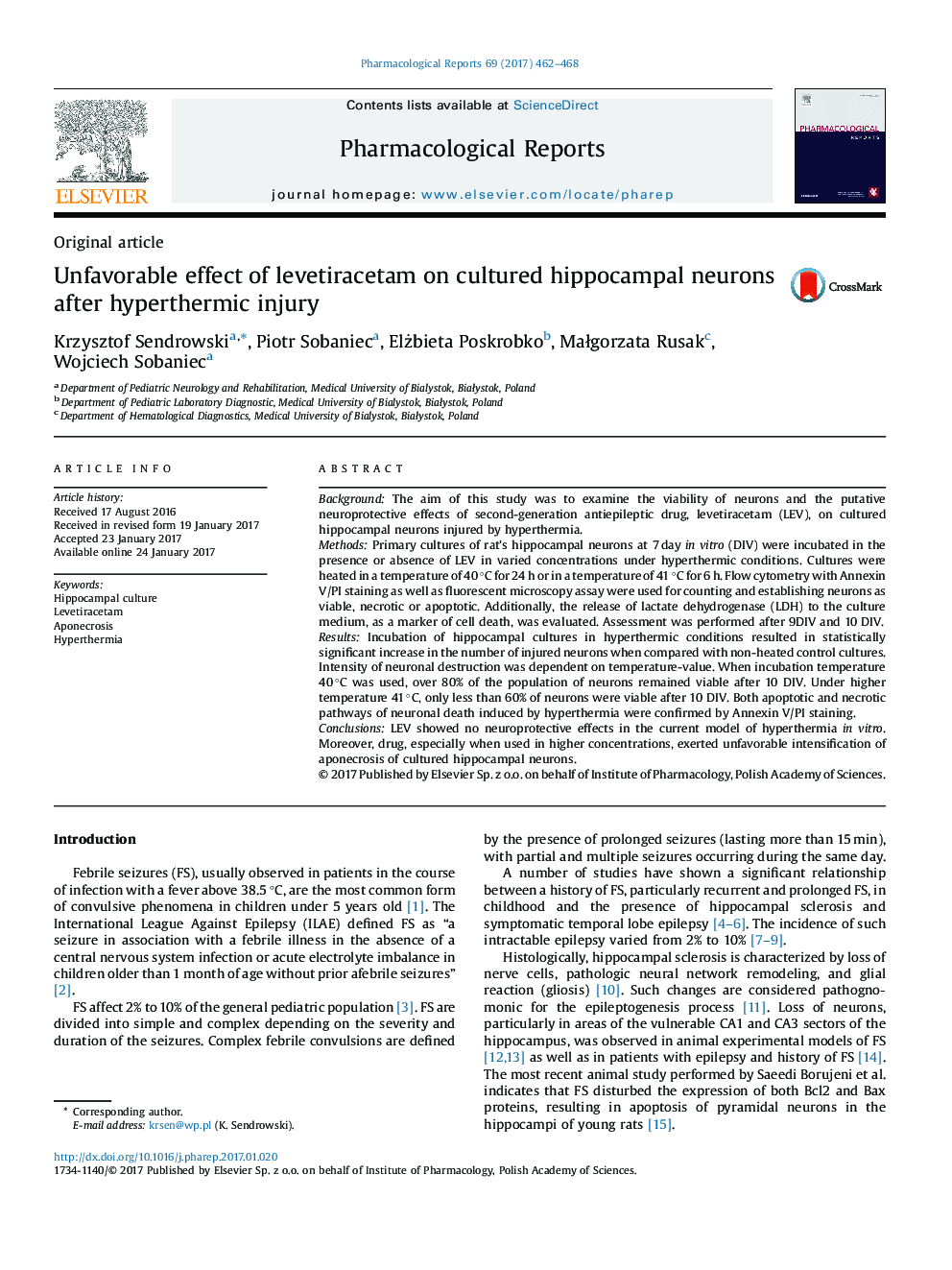| Article ID | Journal | Published Year | Pages | File Type |
|---|---|---|---|---|
| 5515070 | Pharmacological Reports | 2017 | 7 Pages |
BackgroundThe aim of this study was to examine the viability of neurons and the putative neuroprotective effects of second-generation antiepileptic drug, levetiracetam (LEV), on cultured hippocampal neurons injured by hyperthermia.MethodsPrimary cultures of rat's hippocampal neurons at 7 day in vitro (DIV) were incubated in the presence or absence of LEV in varied concentrations under hyperthermic conditions. Cultures were heated in a temperature of 40 °C for 24 h or in a temperature of 41 °C for 6 h. Flow cytometry with Annexin V/PI staining as well as fluorescent microscopy assay were used for counting and establishing neurons as viable, necrotic or apoptotic. Additionally, the release of lactate dehydrogenase (LDH) to the culture medium, as a marker of cell death, was evaluated. Assessment was performed after 9DIV and 10 DIV.ResultsIncubation of hippocampal cultures in hyperthermic conditions resulted in statistically significant increase in the number of injured neurons when compared with non-heated control cultures. Intensity of neuronal destruction was dependent on temperature-value. When incubation temperature 40 °C was used, over 80% of the population of neurons remained viable after 10 DIV. Under higher temperature 41 °C, only less than 60% of neurons were viable after 10 DIV. Both apoptotic and necrotic pathways of neuronal death induced by hyperthermia were confirmed by Annexin V/PI staining.ConclusionsLEV showed no neuroprotective effects in the current model of hyperthermia in vitro. Moreover, drug, especially when used in higher concentrations, exerted unfavorable intensification of aponecrosis of cultured hippocampal neurons.
